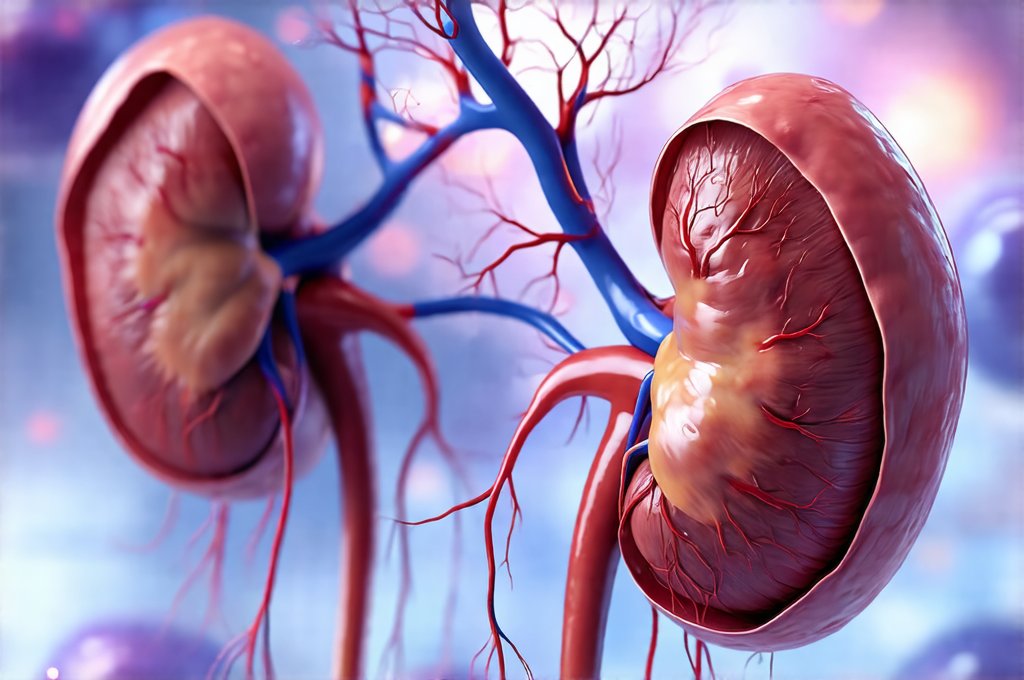The initial stages of discomfort in the pelvic region can often be confusing, leading many to question whether seemingly unrelated symptoms are connected. Cystitis, an inflammation of the bladder, is a common condition presenting with frequent urination, burning sensations, and lower abdominal pain. However, these same symptoms – or variations thereof – can sometimes signal something more serious developing higher up in the urinary tract. Understanding the potential pathways between cystitis and kidney infections (pyelonephritis) is crucial for both recognizing early warning signs and seeking appropriate medical attention. The complexity arises because the urinary system isn’t isolated; it’s a connected network, and issues in one area can frequently impact others.
Many individuals understandably worry about whether an untreated bladder infection could “travel” to the kidneys. While not every case of cystitis will progress into a kidney infection, the possibility exists, particularly if left unaddressed or if certain risk factors are present. It’s important to dispel myths and focus on understanding the underlying mechanisms that allow for this progression – primarily the ascending nature of many urinary tract infections (UTIs). This means bacteria can move from the lower urinary tract (bladder) upwards towards the kidneys, potentially causing significant health problems. Prompt diagnosis and treatment are key to preventing complications and maintaining overall well-being.
The Connection Between Cystitis and Kidney Infections
The relationship between cystitis and kidney infection isn’t always straightforward, but it’s fundamentally linked by the anatomy of the urinary tract. – The urethra connects to the bladder, which stores urine. From there, urine travels through the ureters to the kidneys, where it is filtered and then excreted. This anatomical proximity means that bacteria can easily ascend from the lower urinary tract (bladder) up to the kidneys if preventative measures aren’t taken or treatment isn’t sought. – Escherichia coli (E. coli) is the most common culprit in both cystitis and kidney infections, highlighting this interconnectedness. If a bladder infection remains untreated, E. coli can make its way through the ureters and infect one or both kidneys.
It’s important to note that not all cases of cystitis will lead to pyelonephritis. A healthy immune system can often fight off the infection before it reaches the kidneys. However, certain factors increase the risk of progression. These include: – A history of recurrent UTIs – Diabetes – which can compromise the immune system – Structural abnormalities in the urinary tract – Weakened immune systems (due to illness or medication) – Obstruction within the urinary tract
Ignoring symptoms of cystitis and delaying treatment significantly increases the chance of a kidney infection developing. Kidney infections are more serious than bladder infections and require prompt medical intervention, often involving intravenous antibiotics. Therefore, recognizing the early signs of both conditions is essential for effective management. If you’re concerned about pain despite normal results, you may wonder can you have a completely normal ultrasound with kidney pain.
Recognizing the Signs: Cystitis vs. Kidney Infection
Differentiating between cystitis and kidney infection can be tricky because some symptoms overlap. However, key distinctions exist that can help individuals identify when to seek medical attention. – Cystitis typically presents with frequent urination, a burning sensation during urination (dysuria), lower abdominal discomfort, cloudy urine, and sometimes blood in the urine (hematuria). These symptoms are generally localized to the bladder area. – Kidney infection, on the other hand, often involves more systemic symptoms. In addition to urinary symptoms similar to cystitis, individuals may experience fever, chills, flank pain (pain in the side or back), nausea, vomiting, and general malaise. Flank pain is a strong indicator of kidney involvement and warrants immediate medical attention.
It’s vital not to self-diagnose or attempt to treat a suspected kidney infection at home. The potential for serious complications – including kidney damage, sepsis (a life-threatening blood infection), and chronic kidney disease – makes timely diagnosis and treatment paramount. If you suspect a kidney infection, seek immediate medical care. A healthcare professional can accurately diagnose the condition through urine tests and potentially imaging studies.
Understanding Ascending UTIs
Ascending urinary tract infections are the primary mechanism by which cystitis can lead to kidney infections. This process involves bacteria traveling from the perineum (the area between the anus and genitals) up the urethra, into the bladder, and then along the ureters to the kidneys. – Several factors contribute to this ascent: female anatomy (shorter urethra making it easier for bacteria to reach the bladder), sexual activity, catheter use, and constipation. Constipation can put pressure on the urinary tract, increasing the risk of bacterial migration.
Preventing ascending UTIs involves adopting preventative measures such as staying well-hydrated (flushing out bacteria), practicing good hygiene (wiping front to back after using the toilet), urinating after sexual activity, and avoiding irritating feminine products. For individuals prone to recurrent UTIs, a healthcare provider may recommend prophylactic antibiotics or other preventative strategies. Can you do a kidney ultrasound at home with portable devices is also becoming an option for some patients.
The Role of Risk Factors
Certain factors significantly increase an individual’s susceptibility to developing kidney infections from cystitis. – Diabetes impairs immune function and increases sugar levels in the urine, creating a favorable environment for bacterial growth. – Structural abnormalities within the urinary tract (such as blockages or narrowings) can hinder urine flow, making it easier for bacteria to ascend. – A weakened immune system – due to illness, medication (like immunosuppressants), or other conditions – compromises the body’s ability to fight off infection.
Individuals with these risk factors should be particularly vigilant about recognizing symptoms of both cystitis and kidney infections and seeking prompt medical attention at the first sign of trouble. Regular check-ups with a healthcare provider can also help identify and manage underlying health conditions that increase UTI risk.
Complications of Untreated Kidney Infections
Allowing a kidney infection to progress untreated can have severe consequences. – Kidney damage: Chronic inflammation from repeated or severe infections can lead to scarring of the kidneys, impairing their function. This may ultimately result in chronic kidney disease and potentially kidney failure. – Sepsis: A kidney infection can spread beyond the urinary tract into the bloodstream, causing sepsis – a life-threatening condition characterized by widespread inflammation and organ damage. Sepsis requires immediate hospitalization and aggressive treatment. – Kidney abscesses: In some cases, pus-filled pockets (abscesses) can form within the kidneys, requiring surgical drainage.
The importance of early diagnosis and treatment cannot be overstated. Promptly addressing a suspected kidney infection minimizes the risk of these complications and preserves long-term health. It’s always better to err on the side of caution when it comes to urinary tract infections. If you’re experiencing significant pain, consider whether a massage help with kidney stone pain could offer some relief while seeking professional medical attention.





















